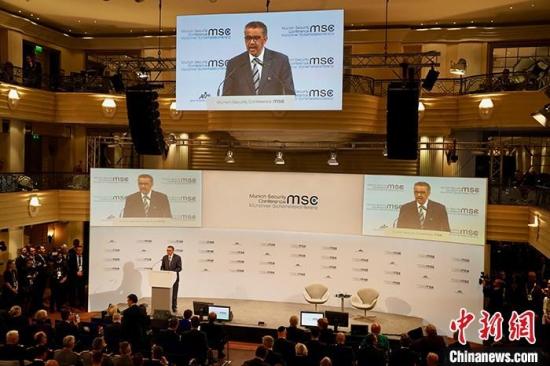China News Agency, Beijing, April 13th, Geneva News: The World Health Organization has recently released a timeline for action against new coronary pneumonia, and the content of the timeline has been continuously updated. According to this timeline, China reported a group of pneumonia cases as early as December 31, 2019, and confirmed a new coronavirus; WHO will enter a state of emergency against epidemics from January 1, 2020.
Data map: World Health Organization (WHO) Director-General Tan Desai. China News Service reporter Peng Dawei
The timeline shows that WHO formed an incident management support team on January 1st, which consists of three levels: headquarters, regional headquarters, and country. On the 4th, the WHO disclosed on social media for the first time that cases of pneumonia occurred in Wuhan, Hubei Province. On the 5th, WHO released the first issue of "Outbreak News" on the new coronavirus, reporting the status of patients with cluster pneumonia reported in Wuhan and public health countermeasures reported by China. On the 10th, WHO issued a comprehensive set of comprehensive technical guidance online. Based on the knowledge of the virus at that time, it provided advice to all countries on how to detect, detect, and manage potential cases.
On January 12, China publicly shared the gene sequence of the new coronavirus. On the 13th, Thailand discovered the first case of new coronary pneumonia outside China. On the 14th, WHO expert Maria van Kokhov confirmed that the new coronavirus already has limited human-to-human transmission and may have a larger outbreak. From the 20th to the 21st, experts from the WHO Representative Office in China and the Western Pacific Regional Office conducted a short field visit to Wuhan. On the 22nd, the inspection team issued a statement saying that there is evidence that there is interpersonal communication in Wuhan.
From January 22nd to 23rd, WHO Director-General Tan Desai convened an emergency committee meeting to assess whether the outbreak constituted a public health emergency of international concern. Independent committee members from all over the world could not reach an agreement based on the evidence at the time. On the 28th, a senior WHO delegation headed by Tan Desai went to Beijing to meet with Chinese leaders to learn more about China's response and provide various technical assistance. The two sides agreed that an international team of first-class scientists will go to China to understand the specific situation and the overall response measures, and exchange information and experience.
On January 30, Tan Desai once again convened an emergency committee meeting, announcing that the new crown epidemic constituted a public health emergency of international concern. This is the sixth public health event of international concern declared by the WHO since the entry into force of the International Health Regulations in 2005.
From February 11 to 12, WHO held a forum on research and innovation of new coronary pneumonia. Gao Fu, director of the China Center for Disease Control and Prevention, and Wu Zunyou, the chief expert in epidemiology of the China Center for Disease Control, made introductory remarks. From the 16th to the 24th, a joint WHO-China mission visited Beijing, Wuhan, and two other cities, exchanged views with health officials, scientists, and medical staff, and published an investigation report. The delegation members included experts from Canada, Germany, Japan, Nigeria, South Korea, Russia, Singapore, and the United States (CDC, National Institutes of Health).
On March 11, the WHO assessed that the new coronary pneumonia could be considered a pandemic. On the 13th, WHO launched the New Coronary Pneumonia Solidarity Response Fund, accepting donations from individuals, companies and institutions. On the 18th, WHO and partners launched a solidarity experiment. This is an international clinical trial designed to obtain reliable data from all over the world to find the most effective treatment for new coronary pneumonia. (Finish)

